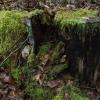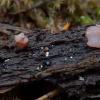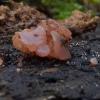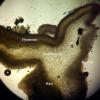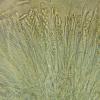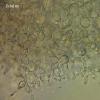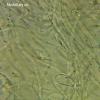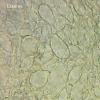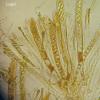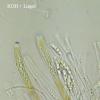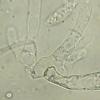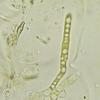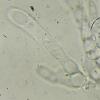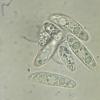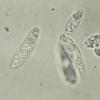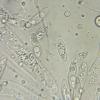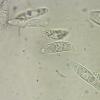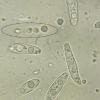
20-08-2025 19:04
Ethan CrensonHello, This asco was found on the same wood as my

22-08-2025 08:41
Masanori KutsunaHello.Can anyone help me to get this article?Liu H

21-08-2025 02:18
Stefan JakobssonOn a necrotic section of a living Tilia cordata I

19-08-2025 20:58
Ethan CrensonHi all, Here is what I believe to be a Hymenoscyp

12-08-2025 19:44
Could someone send me a pdf copy of this article?S
Ombrophila sp.
Mirek Gryc,
03-01-2021 21:03
Today I found a few fruiting bodies on the trunk of a pine cut a few years ago.
My collection is only similar to the one shown on the Zotto (Eigenried) disc. The spores, however, are longer than those presented there, so I decided to discuss the collections.
- croziers +
- no crystals
- no outer gel layer
- on the ectal excipulum, external cells elongated
- spores:
(13.2) 15.1 - 19 (19.8) × (4.2) 4.5 - 5.2 (5.4) µm
Q = (2.8) 2.9 - 4.2 (4.3); N = 17
Me = 17.2 × 4.8 µm; Qe = 3.6
18.75 4.47
18.99 5.41
16.18 4.23
19.84 4.71
17.46 4.62
13.22 4.65
13.63 4.84
17.01 4.72
15.51 4.96
18.49 5.04
17.77 4.65
17.74 5.17
16.62 4.77
18.37 4.31
19.19 4.97
15.07 5.20
18.90 4.99
greetings
Mirek
Hans-Otto Baral,
03-01-2021 21:07

Re : Ombrophila sp.
How large are the apos? You shoudl carefully look at the apical ring, it is very broad and thick.
Compare Ascocoryne sarcoides :-)
Mirek Gryc,
03-01-2021 21:31
Re : Ombrophila sp.
Hi Zotto
Ascomata maximum 2.5-3 mm.
Probably you are right. I have never thoroughly microscoped Ascocoryne sarcoides.
Only a few times I looked at Ascocoryne cilichnium under the microscope and maybe that is why I did not associate this collection with Ascocoryne because it has different spores.
greetings
Mirek
Ascomata maximum 2.5-3 mm.
Probably you are right. I have never thoroughly microscoped Ascocoryne sarcoides.
Only a few times I looked at Ascocoryne cilichnium under the microscope and maybe that is why I did not associate this collection with Ascocoryne because it has different spores.
greetings
Mirek
Hans-Otto Baral,
03-01-2021 21:33

Re : Ombrophila sp.
Another option would be A. inflata. That species has paraphyses with strongly capitate paraphyses and apothecia in the size you indicated. But yours are not capitate. There is no anamorph?
Mirek Gryc,
04-01-2021 09:15
Re : Ombrophila sp.
Due to the lack of an anamorph, I was just not considering this species. They grew on two adjacent stumps, but I did not notice anamorphs on any of them.
Apos was small but mature, paraphyses not capitate.
Thanks for the suggestions but I think it's A. sarcoides.
I will try to download more collections and compare their features.
Mirek
Apos was small but mature, paraphyses not capitate.
Thanks for the suggestions but I think it's A. sarcoides.
I will try to download more collections and compare their features.
Mirek


